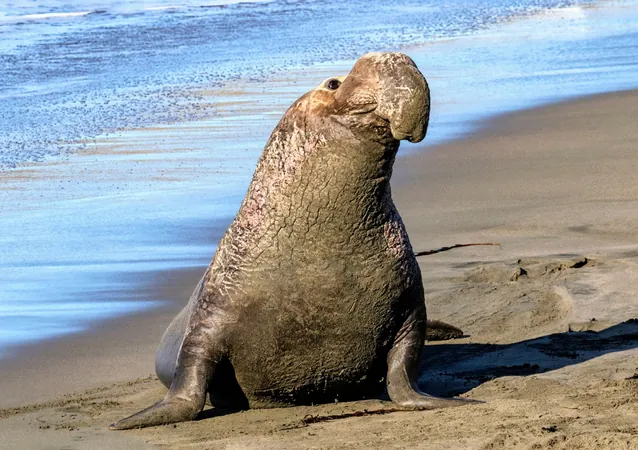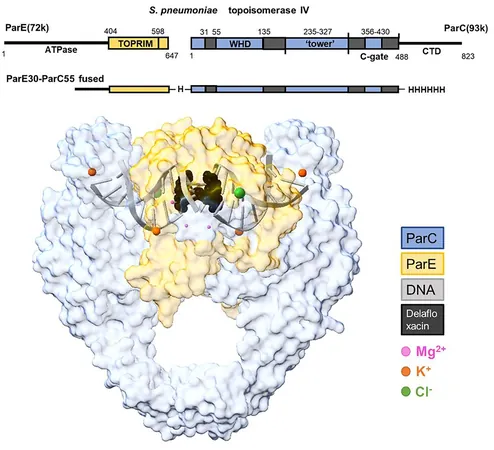
Northern Elephant Seals: Genetic Scars Left by a Near-Extinction Experience
2024-09-28
Author: Wei
Northern Elephant Seals: Genetic Scars Left by a Near-Extinction Experience
An international research team has unveiled significant genetic repercussions of hunting on northern elephant seals, revealing the lasting impact of their near-extinction in the 19th century. These majestic creatures were nearly obliterated due to extensive hunting, and the consequences of this traumatic history have echoed through generations.
According to a groundbreaking study published in Nature Ecology and Evolution, these genetic 'scars' have persisted long after the seals narrowly escaped extinction, providing critical insights into their long-term survival and health.
From Near Extinction to Recovery
At the turn of the 20th century, the northern elephant seal population suffered a devastating decline due to intense hunting from commercial sealers between 1810 and 1860. By the 1890s, this once-abundant species was thought to be extinct, with genetic analyses suggesting that the population may have dwindled to fewer than 25 individuals. Dr. Joseph Hoffman, the study's lead author and an expert in evolutionary population genetics at Bielefeld University, emphasizes the catastrophic effects such dramatic population declines can have on genetic diversity, which is vital for a species' long-term survival.
Fortunately, a remarkable recovery occurred, with the northern elephant seal population rebounding to approximately 225,000 by 2010. But how has their brush with extinction influenced their genetic makeup and health?
The Cost of Survival: Genetic Diversity and Risks
The research team employed a comprehensive approach, incorporating genetic data, health records, population modeling, and simulations to uncover the profound effects of this historical decline. They found that the significant reduction in population size led to the loss of both beneficial and harmful gene variants, a stark contrast to their southern elephant seal relatives who escaped such drastic population bottlenecks.
Dr. Kanchon K. Dasmahapatra, a senior author on the study, warns that the resulting low genetic diversity may hinder northern elephant seals' ability to adapt to future challenges, including climate change and potential disease outbreaks.
Unexpected Health Insights Amid Genetic Loss
In an interesting twist, the researchers discovered no evident health problems related to inbreeding among the seals. Dr. Hoffman noted that the extent of population decline might have inadvertently eliminated several harmful mutations from the gene pool. This finding highlights the complexities of genetic survival strategies in wildlife.
The study serves as a critical case in conservation genetics, illuminating how historical population declines shape current species' genetic landscapes and overall fitness. Conservationists could leverage these insights to bolster efforts for other endangered species facing similar threats.
Urgency in Conservation Strategies
The implications of this research are vast, underscoring the need for convergence between scientific findings and wildlife conservation policy. Policymakers are urged to consider genetic diversity in their strategies, ensuring efforts to protect and restore species are grounded in scientific understanding.
By integrating empirical data with conservation measures, experts hope to develop adaptive management strategies that reinforce the resilience of diverse ecosystems. This not only benefits the northern elephant seal but also offers a framework for addressing conservation challenges across the globe.
In conclusion, this study offers a profound look at the interplay of ecological history, genetic diversity, and survival among northern elephant seals, emphasizing the urgent need for informed conservation efforts. Protecting the genetic integrity of wildlife is crucial for sustaining our planet's rich biodiversity for generations to come.



 Brasil (PT)
Brasil (PT)
 Canada (EN)
Canada (EN)
 Chile (ES)
Chile (ES)
 España (ES)
España (ES)
 France (FR)
France (FR)
 Hong Kong (EN)
Hong Kong (EN)
 Italia (IT)
Italia (IT)
 日本 (JA)
日本 (JA)
 Magyarország (HU)
Magyarország (HU)
 Norge (NO)
Norge (NO)
 Polska (PL)
Polska (PL)
 Schweiz (DE)
Schweiz (DE)
 Singapore (EN)
Singapore (EN)
 Sverige (SV)
Sverige (SV)
 Suomi (FI)
Suomi (FI)
 Türkiye (TR)
Türkiye (TR)